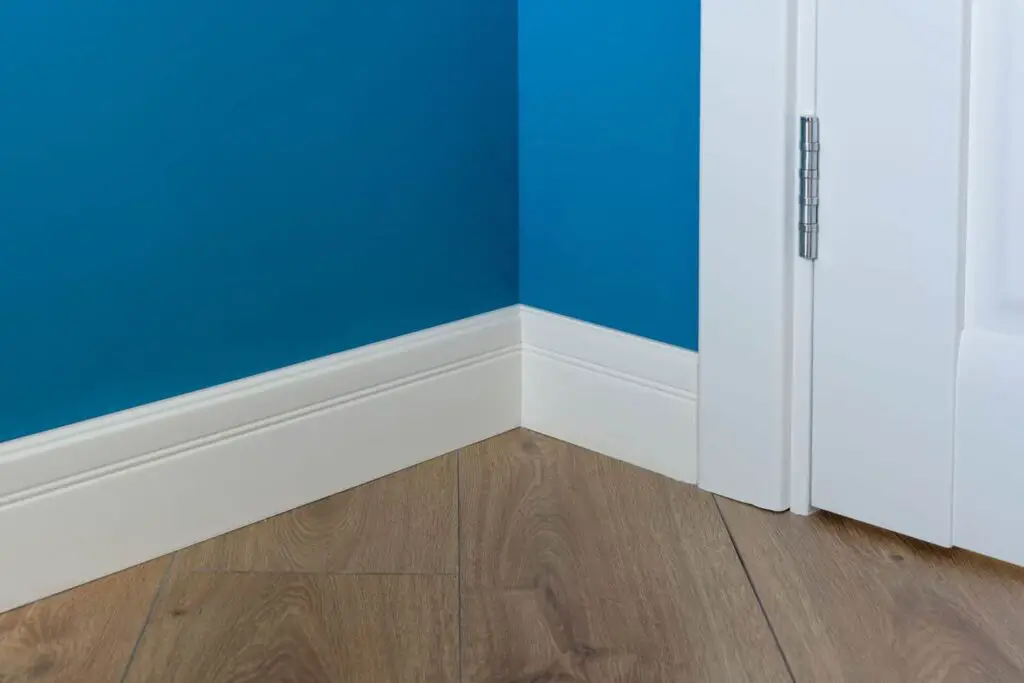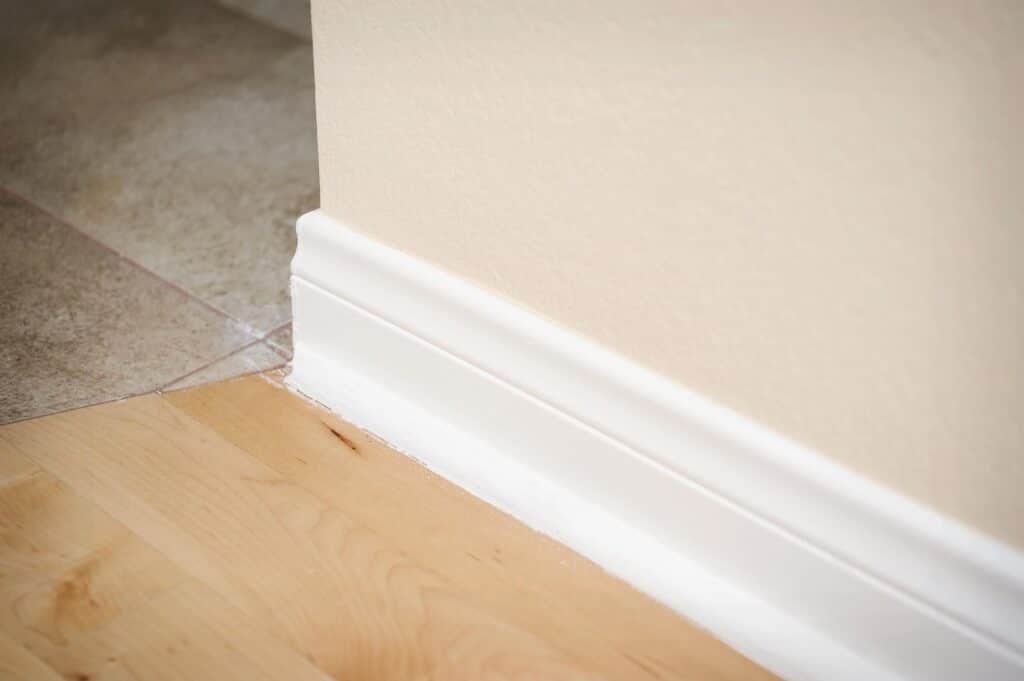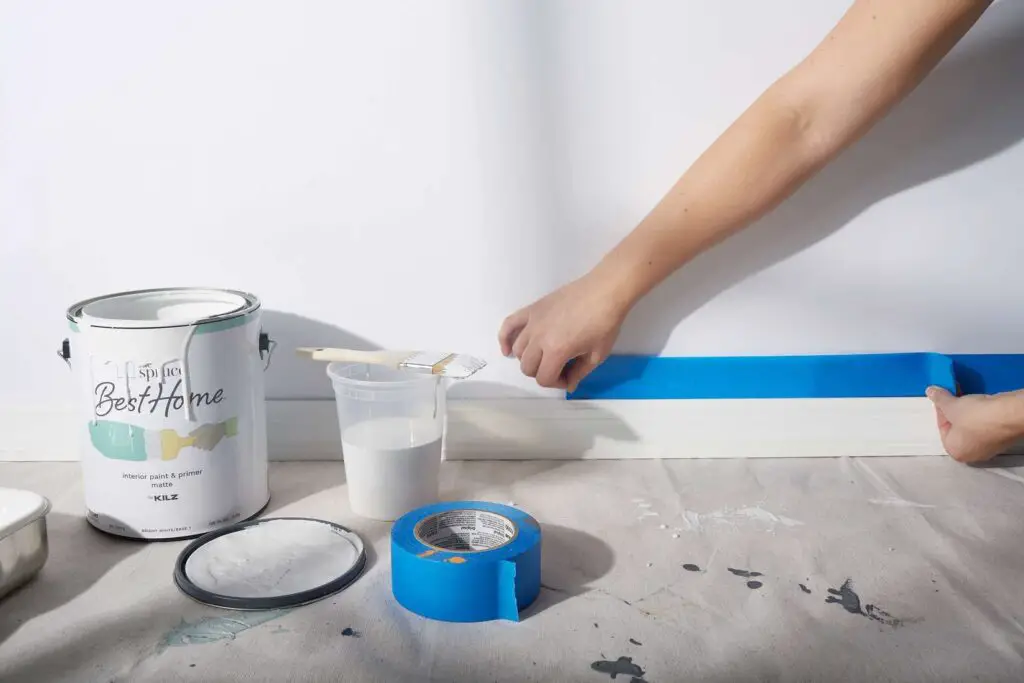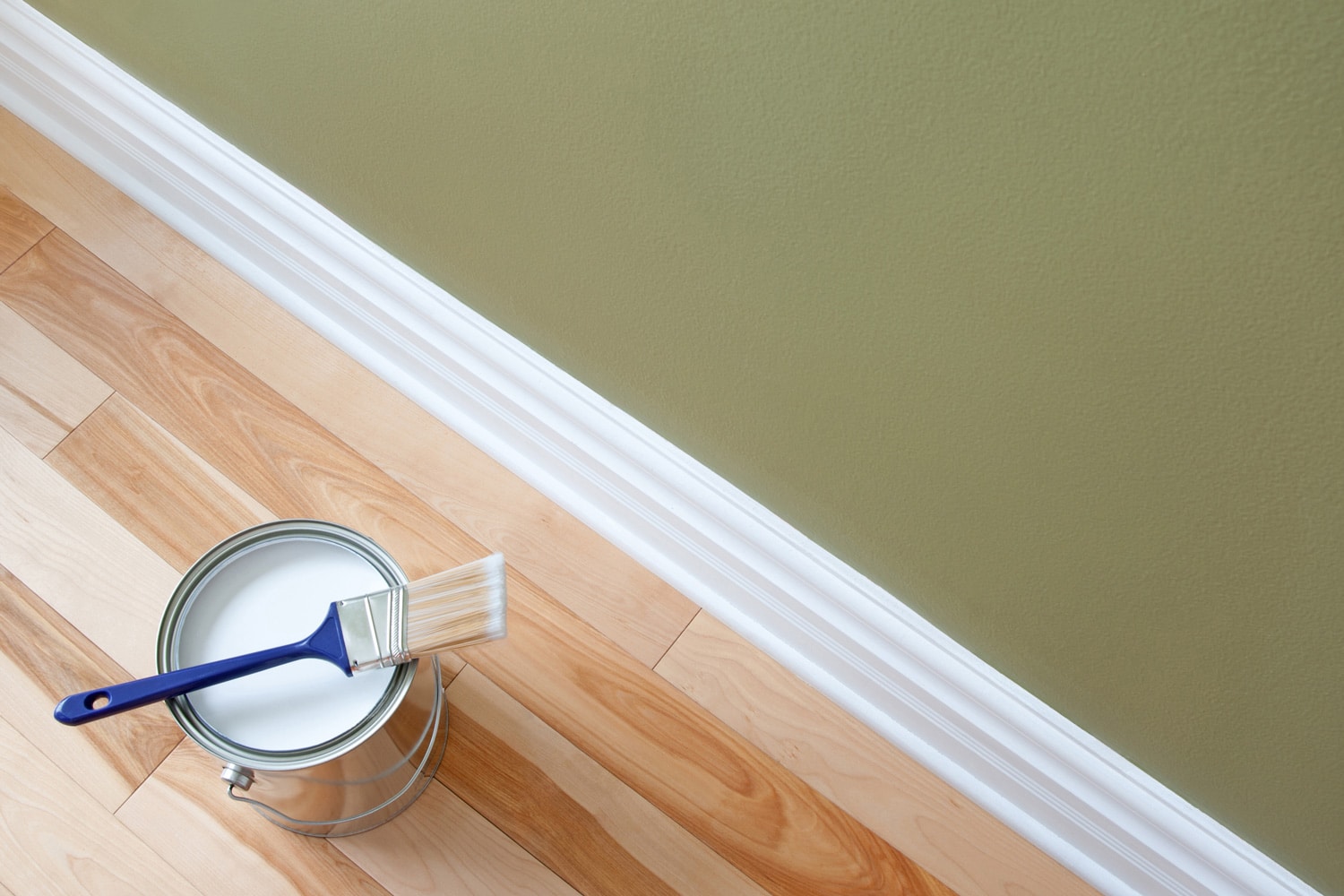How To Repaint Baseboards
Introduction
How To Repaint Baseboards: Dust and dirt can hinder paint adhesion, so thoroughly clean the baseboards. Use a cleaning solution or mild detergent diluted in water and a cloth to wipe away any grime. For stubborn stains, a little bit of elbow grease should do the trick. After cleaning, wipe the baseboards with a tack cloth or a damp cloth to remove any remaining residue. If your baseboards have a glossy or uneven finish, lightly sand them with medium-grit sandpaper.
Sanding helps create a rough surface for the new paint to adhere to and ensures a smooth and even finish. After sanding, wipe away the dust with a tack cloth. Inspect the baseboards for any nail holes, dents, or imperfections. Use putty to fill in fill gap these areas and let it dry completely. Sand the patched spots gently to level them with the surrounding surface. Stir the paint thoroughly to achieve a consistent color and texture. Using a paintbrush or a paint roller, apply the paint evenly on the baseboards.
Start from one end and work your way to the other, following the natural lines of the wood. For a neat finish, avoid overloading the brush or roller with paint. Follow the paint manufacturer’s instructions for drying time between coats. Typically, you’ll need to wait a few hours before applying a second coat. Be patient and allow the paint to dry completely before removing the painter’s tape. Once the final coat is dry, carefully remove the painter’s tape at a 45-degree angle to avoid peeling off any fresh paint.

What type of paint do I use for baseboards?
BEST BASEBOARD PAINT
It’s helpful to paint stairs and trim with water-based or Acrylic-Alkyd semi-gloss paint. Paint stores sell the well-known Benjamin Moore Advanced.
Baseboards usually have latex paint on them because it is easy to apply and dry. Soap is an easy way to clean things that are made of water. It’s better for the environment and safer to use latex paint on the inside than oil-based paint.
Paint made from alkyd oil lasts a long time. Its tough surface is great for stairs and other places that get a lot of use. Use air and mineral spirits to get rid of the smell of oil-based paint.
Latex-oil watercolor paint that is flexible. Low-VOC, can be cleaned with water, and dries quickly. Acrylic baseboard paint lasts a long time and comes in a variety of nice styles.
Wood, metal, and other materials can be enameled. Their tough, smooth surface keeps baseboards from getting stained or damaged.
Latex, paints, soap, and water. Solvents are needed to clean paints and enamels that are made with oil. The finish on your paint should go with the rest of your room’s style. Many people like satin or semi-gloss borders because they are easy to clean and don’t shine too much.
What is the best way to paint new baseboards?
What Is the Fastest Way to Paint Baseboards?
- Clean to remove dust and lightly sand the baseboard.
- Tape the top closer to the wall with painter’s tape.
- Hold a piece of cardboard along the edge of the baseboard right where it meets the floor.
- Prime the surface with a primer and let it dry.
- After priming, paint the wood.
Before painting, ensure that the baseboards are clean and free of any dust, dirt, or debris. If there are any imperfections, sand them lightly with medium-grit sandpaper and wipe away the dust with a tack cloth.
Choose the appropriate type of paint for your baseboards. As discussed earlier, latex, oil-based, acrylic, and enamel paints are common choices. Consider factors like durability, drying time, ease of cleanup, and the desired finish. For new baseboards, high-quality paint is recommended for long-lasting results.
While priming is not always necessary, it can be beneficial, especially for new wood baseboards or if there are knots or stains that need to be sealed. Primer creates a smooth, consistent surface, enhancing paint adhesion and preventing any potential bleed-through. If you opt for primer, apply it evenly and allow it to dry according to the manufacturer’s instructions.
Use painter’s tape to protect the adjacent surfaces, such as the walls and the flooring. Apply the tape carefully along the edges of the baseboards, ensuring clean lines and preventing any accidental paint smudges.
Select high-quality paintbrushes and/or paint rollers appropriate for the size and texture of your baseboards. A 2-inch angled brush is excellent for detailed work and reaching corners, while a small paint roller can be efficient for larger flat surfaces.
Is it best to paint baseboards with brush or roller?
Also, using foam rollers can leave a different texture on the surface than a brush, which only accentuates the lines. So, while some people swear by this method, I recommend only using a paint brush to paint trim!
Faster Coverage: A roller can cover larger areas quickly, making it more efficient for painting long stretches of baseboards.
Smooth Finish: When used correctly, rollers can produce a smooth and consistent finish, minimizing visible brush strokes.
Less Wastage: Rollers generally waste less paint compared to brushes, as they distribute paint more evenly across the surface.
Easier Application: Using a roller is relatively easy and requires less skill than using a brush, making it suitable for those with less painting experience.
Limited Precision: Rollers are not as precise as brushes, making them less suitable for detailed work and tight spaces.
Splatter Risk: Rollers may produce more splatter compared to brushes, so proper technique and caution are necessary to avoid mess.
Hard to Reach Areas: If your baseboards have intricate designs or hard-to-reach areas, a roller may not be the best choice for painting those sections.
How many coats of paint on baseboards?
You’ll only need one coat of primer, but plan on applying two (possibly three) coats of paint when painting baseboards and trim, and be sure to let each coat dry thoroughly before moving onto the next.
One of the main reasons for applying multiple coats of paint is to achieve full coverage and opacity. Baseboards are typically made of wood, which can absorb paint differently, especially if they are new or have a porous surface. Applying a second coat helps even out the paint distribution and ensures that any inconsistencies in the first coat are covered.
Using multiple coats of paint can help hide imperfections on the surface of the baseboards, such as knots, stains, or minor blemishes. The first coat may not fully conceal these imperfections, but subsequent coats can build up and provide a smoother and more flawless finish.
Multiple coats of paint add thickness and durability to the surface, making the baseboards more resistant to wear and tear. With an extra layer of paint, the baseboards can better withstand regular cleaning and everyday use without showing signs of wear.
The color of the paint can also influence the number of coats required. Darker colors often require more coats to achieve full color intensity and opacity, especially when covering a lighter base color. Lighter colors may require fewer coats, particularly if the baseboards are already a similar shade.

Do I need primer to paint baseboards?
Baseboards that do not have factory-applied primer or a raw wood surface should always be primed before painting. Previously primed or painted baseboards can also benefit from a primer coat, but this is not always necessary if the cleaned surface is in good condition. Mix the primer thoroughly.
Improved Adhesion: Primer creates a bonding surface that helps the paint adhere better to the baseboards. This is especially beneficial if the baseboards are new, made of a different material, or have a slick or glossy finish that may not readily accept paint.
Uniform Surface: Primer helps create a consistent and uniform surface, evening out the baseboard’s texture and color. It can help hide imperfections and create a smooth canvas for the paint, resulting in a more professional-looking finish.
Prevents Stains and Bleed-Through: If the baseboards have knots, stains, or discolorations, primer can act as a barrier to prevent these imperfections from bleeding through the paint. It helps to block tannins and other substances that may affect the appearance of the topcoat.
Seals and Protects: Primer seals the surface of the baseboards, preventing moisture and other elements from penetrating the wood. This can be especially important for exterior baseboards or those in high-moisture areas like bathrooms or kitchens.
Reduces Paint Usage: Using primer can reduce the number of paint coats required for full coverage, ultimately saving you time and money on your painting project.
New Wood Baseboards: If your baseboards are newly installed or made from untreated wood, using primer is highly recommended. New wood can be porous, and primer ensures that the paint adheres properly and provides a consistent finish.
Baseboards with Stains or Knots: If your baseboards have knots or stains that you want to cover completely, using a stain-blocking primer can prevent these imperfections from showing through the paint.
Can I use wall paint on baseboards?
You can now paint your baseboards, trim and drywall walls in the same paint. That means the same colour and sheen which is extremely helpful for DIYers. Below are two examples of walls, baseboards, door frames, doors, and wainscoting all painted in the same colour and gloss all in the same paint.
Baseboards are subject to frequent contact, scuffs, and cleaning, which can lead to wear and tear over time. Paints formulated for baseboards and trim are often more durable and resistant to damage compared to standard wall paint. They are designed to withstand the rigors of everyday use, making them a better choice for areas that receive more wear, such as baseboards.
Baseboard paint typically comes in various finishes and sheens, ranging from matte to high-gloss. The finish options allow you to choose the level of shine and smoothness that complements your interior design. Wall paint, on the other hand, may not offer the same range of finishes, limiting your ability to achieve the desired look for your baseboards.
Baseboards are more prone to dirt, dust, and spills, so it’s essential to choose a paint that is easy to clean. Baseboard paints are often formulated to resist stains and allow for easy cleaning with mild soap and water. Wall paint may not have the same level of stain resistance and could be more challenging to clean without affecting the finish.
Paints designed explicitly for baseboards and trim typically have better adhesion properties, ensuring that the paint adheres well to the surface and provides excellent coverage in fewer coats. Using wall paint on baseboards may require more coats to achieve full coverage and may not adhere as effectively, resulting in an inferior finish.
Is it better to paint baseboards or walls first?
Do you paint walls or trim first? From a professional point of view, with interior painting, it makes the most sense to paint your trim first, then ceilings, and then your walls. It’s much easier and faster to tape off trim than to tape off your walls. And you definitely don’t want the hassle of taping them both.
Minimizes Tape Use: When you paint the baseboards first, you can avoid using painter’s tape along the bottom edge of the baseboards to protect the walls. This can save time and effort, especially if you’re working with intricate baseboard designs or if you’re concerned about potential paint bleed.
Easier Cleanup: By painting the baseboards first, any accidental paint splatters or drips that get on the walls while painting the baseboards can be easily covered up when you paint the walls. This can make the cleanup process less daunting and ensure a clean and polished finish on the walls.
Crisp Lines: Painting the baseboards first allows you to create sharp and clean lines along the top edge of the baseboards, which can act as a guide when painting the walls later. This method can result in a more professional-looking finish, especially if you are painting the baseboards in a contrasting color to the walls.
Easier Cutting In: Cutting in refers to the process of painting the edges and corners of walls near the baseboards, ceiling, and trim. By painting the walls first, you can easily cut in along the baseboards, eliminating the need for precise taping and making the baseboard painting process smoother.
Baseboard Protection: When you paint the walls first, you can use painter’s tape to protect the freshly painted walls while painting the baseboards. This can prevent accidental spills or smudges on the walls and ensure a clean and professional finish on both surfaces.
Do you paint baseboards first or last?
Paint the Trim First, Then the Ceilings and Walls
Pro painting tips will usually tell you to follow a certain order when painting a room. They paint the trim first, then the ceiling, then the walls. That’s because it’s easier (and faster) to tape off the trim than to tape off the walls.
Painting baseboards first can help protect the walls from any accidental spills or splatters that may occur during the baseboard painting process. By the time you paint the walls, the baseboards will have already dried, minimizing the risk of damaging the freshly painted walls.
Starting with the baseboards allows for easier cleanup of any paint drips or smudges that might occur on the walls. You can cover these imperfections when painting the walls later, resulting in a cleaner and more polished finish.
Painting the baseboards first allows you to create sharp and clean lines along the top edge of the baseboards. This can serve as a guide when cutting in along the walls later, helping to achieve a professional-looking finish, especially if the baseboards are painted in a contrasting color to the walls.
Completing the baseboards first may save time, as it eliminates the need to use painter’s tape along the bottom edge of the baseboards to protect the walls. This can be particularly advantageous when working with intricate baseboard designs or multiple rooms with different baseboard colors.
By painting the walls first, you can easily cut in along the baseboards, eliminating the need for precise taping. This method can make the baseboard painting process smoother and less time-consuming, especially if you’re comfortable with cutting in.
When you paint the walls first, you can use painter’s tape to protect the freshly painted walls while painting the baseboards. This can prevent any accidental spills or smudges on the walls, ensuring a clean and professional finish on both surfaces.

Conclusion
Preparation is key, so be sure to gather all the necessary materials and tools before starting. Taking the time to clean, sand (if needed), and fill any imperfections in the baseboards ensures a smooth and durable finish. Throughout the process, attention to detail is essential. Applying painter’s tape and using a steady hand while painting will result in clean, sharp lines that elevate the overall appearance of the baseboards and the room as a whole.
Don’t rush the drying time between coats, as allowing each layer to dry fully ensures a more paint baseboard even and long-lasting finish. Patience pays off in achieving a professional outcome. Remember, repainting baseboards not only enhances the aesthetics of your home but also protects and maintains these vital components of your walls. As you gain confidence and experience through this painting endeavor, you’ll likely find yourself more willing to take on other DIY projects, expanding your home improvement skills and saving money on professional services.
Whether you’re preparing your home for a special occasion or simply looking to update your living space, this DIY project offers a cost-effective and gratifying way to transform the ambiance of any room Additionally, repainting your baseboards can complement other home improvement projects you might have undertaken. Whether you’ve recently painted your walls or installed new flooring, freshening up the baseboards ties everything together, giving your home a cohesive and polished look.








